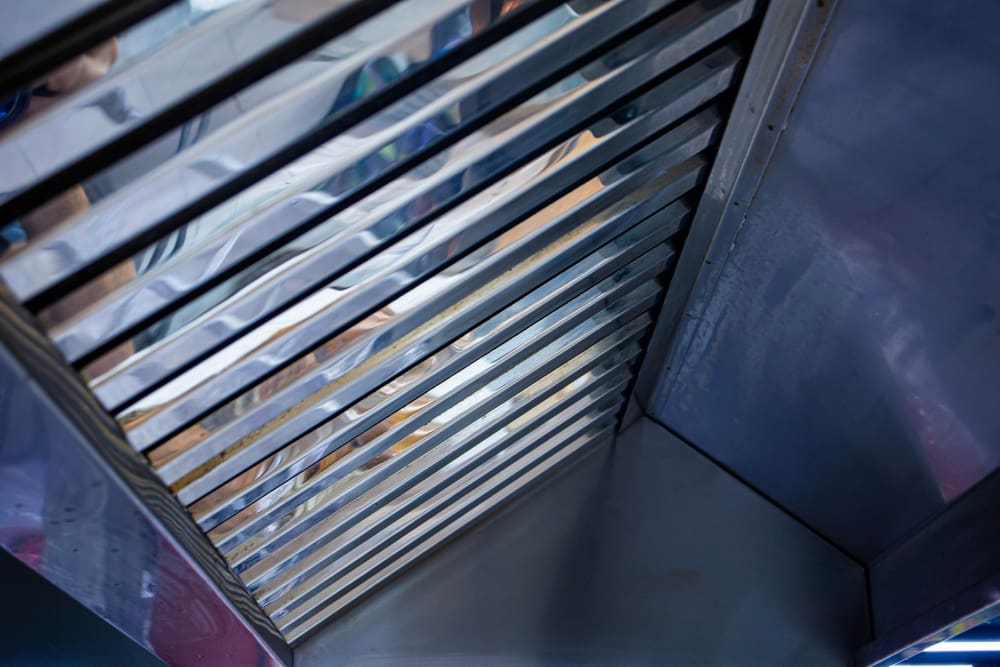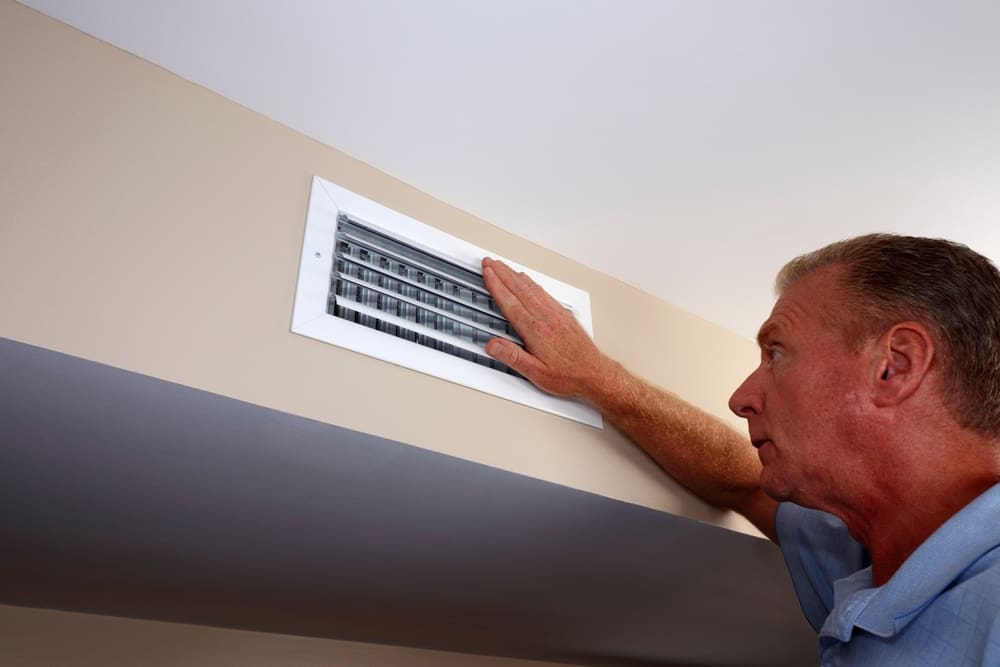
Dampers are mechanical components added to HVAC systems to increase comfort and energy efficiency and prolong the lifespan of the HVAC unit. An HVAC owner ought to understand dampers, their purpose, and how they can be used to improve a home or business.
What Is an HVAC Damper?
An HVAC damper is a device that controls the amount of airflow into or out of a home. Depending on the season, it can be used for both heating and cooling. In the winter, it can help keep your home warm by closing off any openings in the ductwork that would allow cold air to come in. In the summer, it can be used to help cool your home by closing off any openings in the ductwork that would allow hot air to come in.
Dampers are usually installed in attics or basements, but some may also be located inside walls near an HVAC system’s filter. They’re typically made out of metal, so they can rust over time, but some newer models are made of plastic instead.
Where Are HVAC Dampers Located?
Types of HVAC Dampers
Many different types of dampers work based on the valve mechanism they utilize and other functions they could have, such as airflow measurement, air cleansing, and temperature control. It’s useful to know what types of dampers you can find on the market and when each damper is best utilized in an HVAC system.
Manual HVAC dampers are the simplest and least expensive type to install. This type of damper has no electrical parts or sensors. Manual dampers are commonly used in small commercial or residential buildings where frequent access to the damper is necessary for furnace servicing.
Automatic HVAC dampers are the easiest mechanical controls that can be used to regulate HVAC airflow. They provide an automated means of opening and closing the dampers in response to changes in temperature or pressure. The size of these dampers is usually much smaller than manual ones, meaning they can be installed in tighter spots than most other types of dampers.
Those are the broadest categories. Now, let’s go into specific differences.

1. Butterfly Flat Dish Dampers (BFD) – HVAC Dampers
Butterfly flat dish dampers are the most common type of damper in HVAC systems. They’re often used in residential and commercial air conditioning systems as well as in heating ducts. The butterfly flat dish damper is shaped like a circle with two semicircles attached to it. The semicircles are called flaps, and they open and close to direct airflow through a system.
The butterfly flat dish damper consists of a round blade on a central hinge and a seal to connect the edges of the blades. The circumference of the duct isolates any material and keeps it from entering the ductwork
2. Blade HVAC Dampers
Blade dampers are some of the most common dampers used in HVAC systems. There are two types.
As the name implies, parallel blade dampers use two blades parallel to each other. An elastic material connects the blades. They are excellent at maintaining airflow.
Opposed blade dampers consist of two opposed blades forced into contact by the flow of air in the duct. The blades are mounted so that they can rotate freely about their axis and slide against each other. They are best for controlling airflow.
The blades are connected to a shaft that rotates when an electric motor is turned on or off. The movement of the blades controls airflow into or out of an HVAC system.
3. Guillotine Dampers
Guillotine dampers are used to control airflow and temperature in a duct. They are usually installed on the outlet side of the duct. The damper blades are connected to a rod that can move vertically. When the damper blades are closed, airflow into or out of the duct is stopped. If they’re open, air flows freely through them. Guillotine dampers are often used with other HVAC components like registers and grilles.
4. Louver Dampers
Louver dampers are a type of damper used on the supply and return ducts in an HVAC system. They are designed to regulate the flow of air into and out of the room and keep the amount of energy being used by the fan at a constant level.
Louvers are made up of two plates connected at their edges with hinges. One plate has openings cut into it, and the other has slats arranged to allow air to pass through it. When open, the louver lets air flow freely, and it blocks airflow completely when closed.
5. Inlet Vane HVAC Dampers
These dampers are typically found in the supply, return, and exhaust of central heating and cooling units. Inlet vanes are used to control the flow of air into the duct. They do this by opening and closing based on the temperature of the air entering. Although they can be used on either, inlet vane dampers are usually installed on a return air duct, not a supply air duct. Inlet vanes work like an automatic valve. When the outside air temperature is lower than inside, they close; when it’s higher than inside, they open. Of course, which way this works depends on whether you are using your heating or cooling equipment.
Adjusting Dampers
A damper controls airflow through your HVAC system. Dampers can be adjusted by opening or closing the damper flap or valve. They’re typically found in ductwork. Ductwork is the part of your HVAC system that distributes conditioned air throughout your home and is used to regulate the temperature in individual rooms.
Adjusting dampers is a great way to control the airflow in your HVAC system. Dampers are located in different parts of the system and can be adjusted to allow more or less airflow, depending on what you need. For example, if you have too much cold air coming into your home, you can adjust the damper on your attic fan, so it opens less. This will reduce the amount of cool air entering your home while still keeping enough cool air flowing through the attic to keep it from overheating.
To adjust that sort of damper, you’ll need to turn off your AC and heater, unscrew the cap on top of your return line, and then loosen or tighten either side of the damper until you have reached your desired airflow setting.
Optimize Your HVAC System—Call Us Now
Advantages of HVAC Dampers
The main advantage of HVAC dampers is that they allow for better energy efficiency in your home. They can also help you maintain a consistent temperature throughout your interior space. HVAC dampers give you more control over how much air flows through your ductwork. This means that you’ll be able to save money on your utility bills by regulating how much warm or cool air is delivered throughout each room in your house.
Turn to Your Local Experts
You can count on our NATE-certified professional air conditioning and heating technicians at BEST Air Conditioning Plumbing Repair to ensure that your home is comfortable. Our EPA certification and A+ rating from the BBB give customers peace of mind. The heating, cooling, and indoor air quality services we offer in Las Vegas include inspections, maintenance, repairs, and installations. We also install and seal ductwork. On top of all that, we provide a full range of outstanding plumbing services.
Our experienced technicians know their way around ductwork, and they possess all the tools and equipment necessary to furnish excellent results. Let them ensure your Las Vegas home stays comfortable all year long. Call us today to arrange a no-obligation consultation and a free quote.
Dampers FAQ
1. How do I know if my HVAC damper needs adjustment?
If you’re noticing uneven temperatures in different rooms or rooms that feel too hot or too cold, adjusting the dampers may help. Dampers are meant to control airflow and can be adjusted to balance temperatures throughout your home.
2. Can I install HVAC dampers myself?
While it is possible to install dampers yourself, it is often best to hire a professional HVAC technician. Incorrect installation can lead to inefficiency or damage to your system.
3. How do dampers contribute to energy savings?
Dampers help regulate airflow in your HVAC system, preventing excess cooling or heating from entering rooms that don’t need it. This leads to more efficient energy use, which can reduce your utility bills.
4. What are the signs of a malfunctioning HVAC damper?
Signs of a malfunctioning damper may include uneven heating or cooling, poor airflow, or rooms that remain uncomfortable despite thermostat adjustments. If you notice these issues, it may be time to inspect or replace your dampers.

